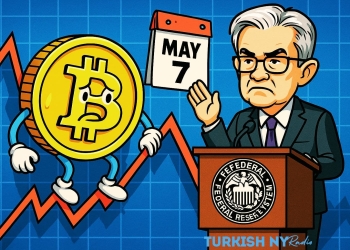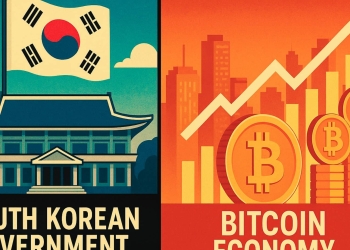A Brazilian national stablecoin is in the works following the creation of a consortium by the leading cryptocurrency exchanges in the country. The group has joined forces to develop a Real-pegged stablecoin, BRL1, through a significant blockchain network later this year.
According to an official media statement, the group consisting of Bitso, Foxbit, Mercado Bitcoin (MB), and Cainvest expects that the stablecoin BRL1 they plan to launch soon will reach a circulation of at least $18 million within 12 months. The consortium aims to use the Brazilian national stablecoin to facilitate transactions between their alliances of platforms and provide a user-friendly and fluid experience for their customers.
A Bold Step for the Brazilian Crypto Economy
While the three exchanges are competitors within the cryptocurrency market, their synergy will promote the growth of the Brazilian crypto space. The group will also incorporate other initiatives, including Drex, the country’s digital Real project, through a partnership that marks a bold step for the Brazilian crypto economy. The Director of New Business at Mercado Bitcoin, Fabrício Tota, reiterated the significance of their cooperation, noting that they had prioritized the creation of the Brazilian national stablecoin.
On the other hand, Cainvest’s CEO Charles Aboulafia stated that the company’s commitment to the project was led by the company, representing at least 60% of Brazil’s banking market. While the company is a lesser-known group member, it has committed itself to offering liquidity for Bitcoin (BTC) and Ethereum (ETH) pairs that will be listed against Real-pegged stablecoin on the three digital asset exchanges. While noting the challenges, such as the friction between regular and cryptocurrencies, which are associated with the project, Ricardo Dantas of cryptocurrency exchange Foxbit said the aim of BRL1 could be to bridge the existing gap and enable seamless transactions. The Brazilian nation stablecoin will initially launch on the Polygon and Ethereum blockchains.
Faster Cheaper Transactions
According to the consortium, government bonds and the Brazilian Reais will back the Real-pegged stablecoin, with an initial issuance of R$10 million. This structure is meant to offer stability and an extra layer of security for BRL1. Bárbara Espir, of cryptocurrency exchange Bitso country, stated that BRL1 had the potential to facilitate cheaper, faster and more transparent financial transactions both locally and internationally. The three cryptocurrency exchanges have tapped into the expertise of Fireblocks to enjoy its experience in tokenization and custody technology.
Growing Stablecoin Market
The proposed launch of a Brazilian national stablecoin comes at a time when the use of stablecoins is in the hands of large regional companies spearheading the initiatives. Last August, the digital bank unit of Latin America’s company Mercado Libre (MELI), Mercado Pago, introduced Meli Dollar, a stablecoin pegged to the US dollar. Earlier in 2022, Tether, the issuer of USDT, enabled the conversion of USDT to Brazilian Reals after partnering with SmartPay, a local crypto service provider. While Brazilians and Mexicans weren’t very familiar with USDT, the company also introduced the MXNT token, stablecoin pegged to the Mexican Peso during the same year.
Brazilians can access USDC via local financial institutions through PIX, the Central Bank of Brazil’s digital payment system launched, which boasts over 160 million users. In Mexico, the USDC is connected to SPEI, a system operated by the country’s central bank, Banco de México. USDC’s supplier Circle’s recent entry into the Latin American market came when the company was vigorously expanding the reach of its stablecoin to other existing networks. The USDC is currently the second largest stablecoin globally after Tether’s USDT, with a market cap of $35.50 billion and a daily trading volume of $6.51 billion.
Conclusion
Brazil has been ranked as the fifth country globally regarding the number of people who own and use cryptocurrencies. The country leads the Latin American region, followed by Colombia, Mexico and Argentina. The rise of crypto’s popularity in Brazil and the area is due to inflation and the devaluing of their local currencies. Introducing a Brazilian national stablecoin could see more people turning to stablecoins to store their wealth.

























































































![BitTorrent [New]](https://s2.coinmarketcap.com/static/img/coins/64x64/16086.png)





















